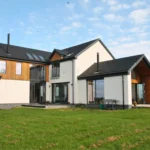Owning a house is a dream that most families would want to achieve as soon as possible. And with the easy availability of home finance, realizing this dream has become even more comfortable. However, the reality check leads to disappointment when, despite the availability of funding, living in one’s own house seems to be a distant dream. And this is on account of inadequate fund availability for the down payment.
Understanding down payment
The banks can fund only 80% of the property value. The remaining 20% has to be financed by the buyer. So if a property is being bought for say 60 lakhs, the available home finance will be 48 lakhs. The borrower is expected to have the balance funds of 12 lakh. This amount of 12 lakhs is termed as a down payment.
One may be looking at arranging these funds through a soft loan from family and friends. But arranging for such large amounts may still not be feasible.
There have been instances where people have tried arranging the down payment through personal loans.However, in both scenarios, the borrower may find himself to be struggling to manage the EMIs of the personal loan along with the EMI of home finance.

Getting the number right
Getting to the right figure of money required to bridge the gap between the loan and the actual cost is of high importance. Therefore, it becomes imperative to work out on details of the house. Spending a little time on the cost of property that one would want to live in can be a good starting point. Then deciding on the area depending upon the cost will give a fair idea of the costs.
One should not forget that saving or arranging the down payment can take a few years, and the inflation may result in hiking the property cost as well. Factoring a 5% per annum inflation on the price tag may only be prudent and help in saving the last minute surprises.
Other than this, even the registration cost adds to the overall fund requirement. While planning for the funds, this generally gets left out.
Other than this, one may be required to invest some money into the house interiors to make it livable. While one may not be wanting to spend a fortune, but the fact is that it does cost some amount and must be taken into account while planning.
How to achieve the goal?
The best way is quite simple. Follow the discipline of saving for the down payment in the target number of years. So if one is aiming to achieve the target of 12 lakh in 5 years, a minimum saving of 2 lakh per year would be needed. It is better to have a monthly discipline of contribution towards this pool.

Where to invest
The big question which most of the people will surely struggle with. Return on investment will add to the funds and has the potential to bring down the time spent on saving. And thus facilitating moving into one’s own house faster.
However, one must bear in mind that the motive is not to create wealth but to save money. So it may be a good idea not to go very aggressive and invest only in the instruments that will give a reasonable return.
Let us look at the options.
SIP v/s FDs v/s RDs
Three instruments that generally people opt for are SIPs, FDs, and RDs. While the systematic investment plan makes one invest in the market, the fixed deposit and recurring deposits are made with the banks. Notionally, the FDs and RDs are more secure, but the fact is that the SIPs would garner a better return on the invested money. If one carefully chooses the fund, then the risk may also get covered substantially.
Other options
Borrowing from other saving instruments like the PF or the insurance policy can also be one option that can be weighed to bridge the gap in the required funds and available loan options.
Conclusion
Irrespective of the income band, one would be required to save money for the down payment. A thought-through plan on the time frame, amount needed, and the instrument used to protect the funds will help realize the dream as planned.






